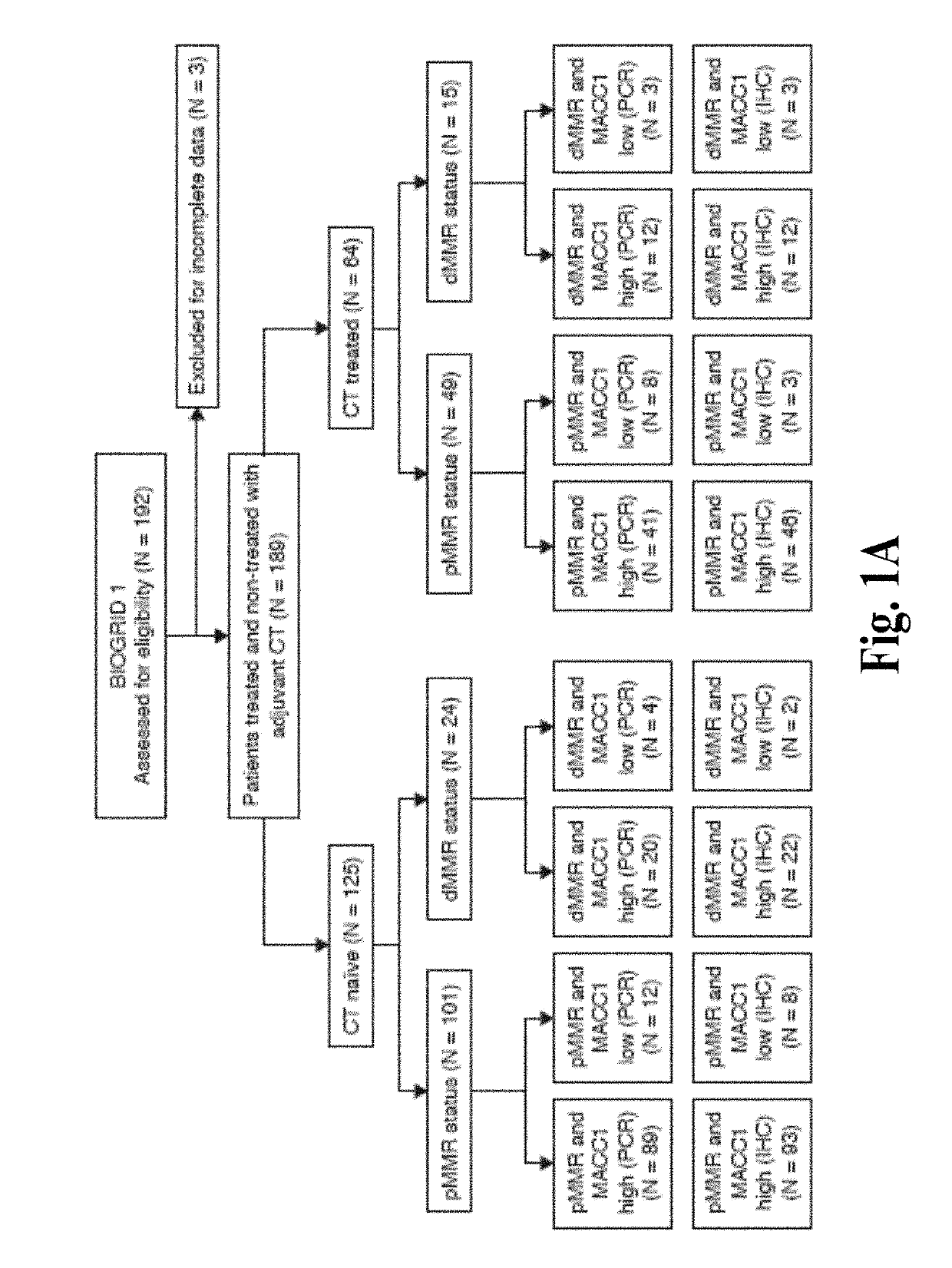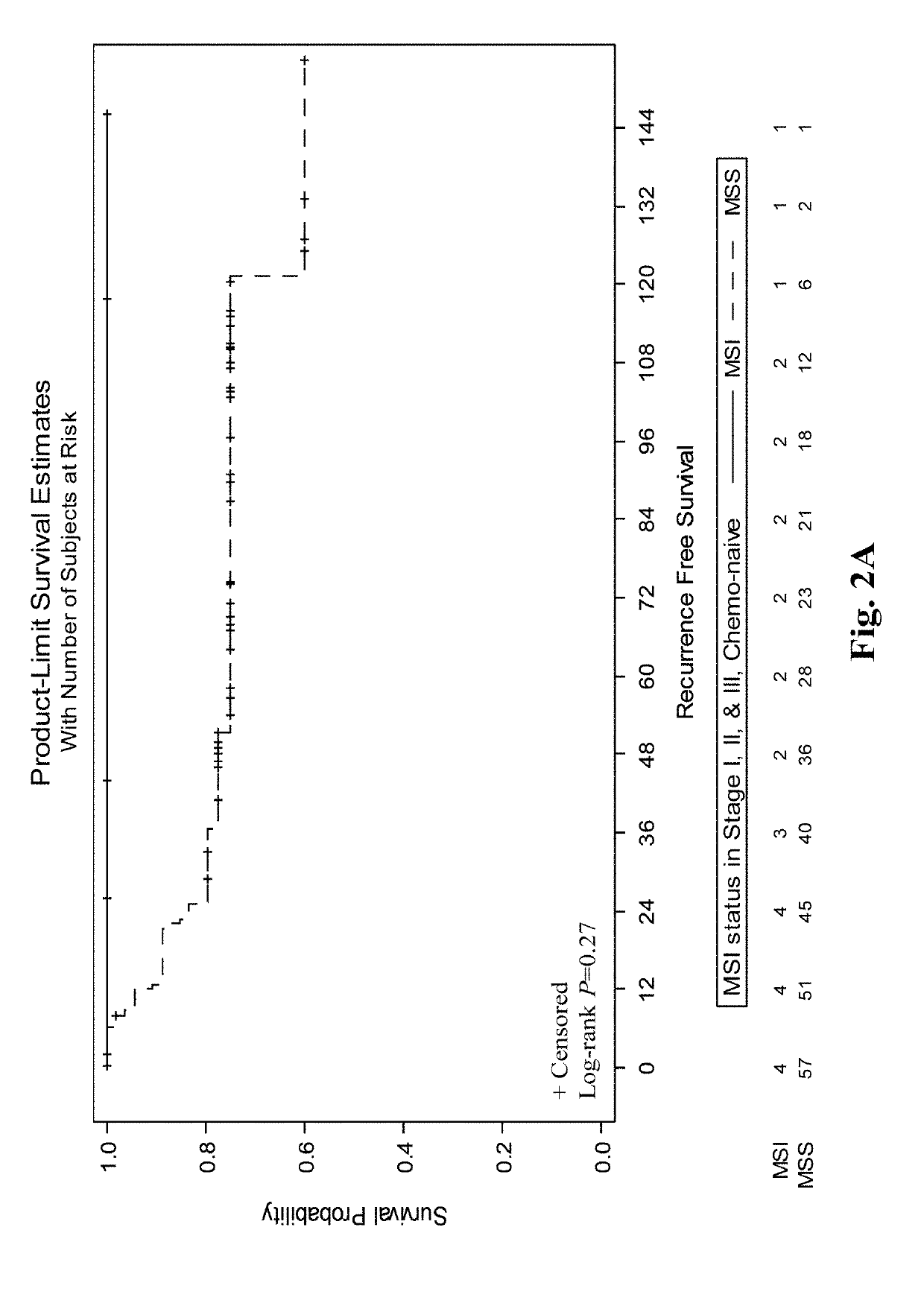Compositions and methods for prognosing and treating colorectal cancer
a colorectal cancer and colorectal cancer technology, applied in the field of colorectal cancer prognosis and treatment, can solve the problems of not being able to recommend as a standard of care, experiencing relapse, and no evidence of relapse or chemotherapeutic benefit in high-risk patients
- Summary
- Abstract
- Description
- Claims
- Application Information
AI Technical Summary
Benefits of technology
Problems solved by technology
Method used
Image
Examples
Embodiment Construction
I. Introduction
[0127]Expression of Metastasis Associated in Colon Cancer 1 (MACC1) was previously identified as a prognostic marker for colorectal cancers. See U.S. Pat. No. 7,851,168. We have discovered that a combination of mismatch repair (MMR) and MACC1 gene expression status of the patient could serve as a basis for risk stratification of early stage colon cancer patients. Patients with defective MMR (dMMR) status have improved survival and do not benefit from 5-fluorouracil (5-FU) therapies. (Sargent et al. 2010; Ribic et al. 2003; Popat et al. 2005). In contrast, patients with a proficient MMR (pMMR) status have a higher risk of recurrence and worse survival. The pMMR patients are then further stratified on the basis of MACC1 gene expression. Patients with a pMMR status and a low MACC1 expression have a favorable prognosis similar to patients having a dMMR status, whereas patients having a pMMR status and high MACC1 expression have a less favorable prognosis.
[0128]Therefore, ...
PUM
| Property | Measurement | Unit |
|---|---|---|
| dissociation constant | aaaaa | aaaaa |
| dissociation constant | aaaaa | aaaaa |
| dissociation constant | aaaaa | aaaaa |
Abstract
Description
Claims
Application Information
 Login to View More
Login to View More - R&D
- Intellectual Property
- Life Sciences
- Materials
- Tech Scout
- Unparalleled Data Quality
- Higher Quality Content
- 60% Fewer Hallucinations
Browse by: Latest US Patents, China's latest patents, Technical Efficacy Thesaurus, Application Domain, Technology Topic, Popular Technical Reports.
© 2025 PatSnap. All rights reserved.Legal|Privacy policy|Modern Slavery Act Transparency Statement|Sitemap|About US| Contact US: help@patsnap.com



